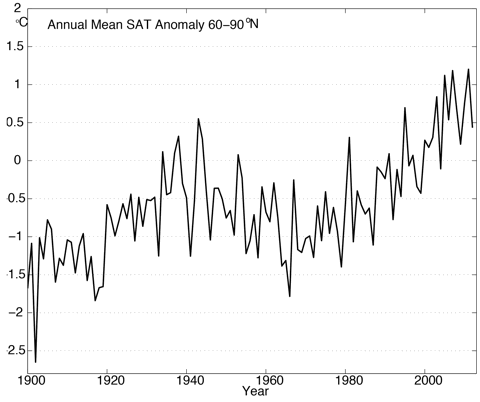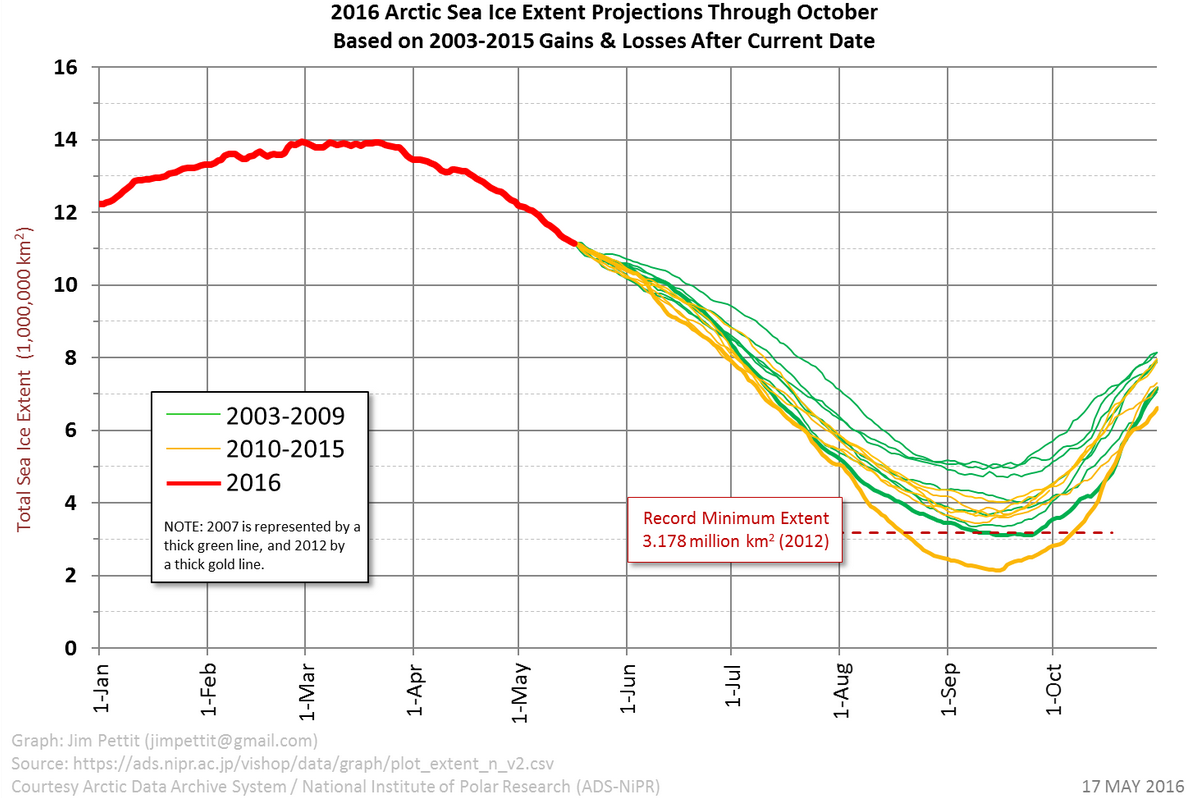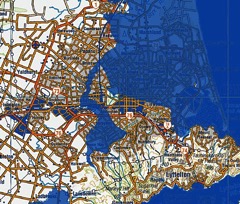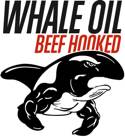 According to Waikato University’s Willem de Lange and freelance climate denier Bob Carter, the whole Arctic is cooling strongly. When Bill and Bob plagiarised their own work for the Heartland-funded and published Non-governmental International Panel on Climate Change (NIPCC) second report, they were not just copying their own words, but also plagiarising earlier efforts by the NIPCC and Craig Idso’s Centre for the Study of CO2 and Global Change. In fact, a 2007 misrepresentation by Idso of a 2004 paper about temperatures up to the 1990s in a single Greenland fjord has been handed down through seven years, successive “authors” and NIPCC reports until it has become an unbelievable lie that de Lange and Carter are happy to repeat for a new audience.
According to Waikato University’s Willem de Lange and freelance climate denier Bob Carter, the whole Arctic is cooling strongly. When Bill and Bob plagiarised their own work for the Heartland-funded and published Non-governmental International Panel on Climate Change (NIPCC) second report, they were not just copying their own words, but also plagiarising earlier efforts by the NIPCC and Craig Idso’s Centre for the Study of CO2 and Global Change. In fact, a 2007 misrepresentation by Idso of a 2004 paper about temperatures up to the 1990s in a single Greenland fjord has been handed down through seven years, successive “authors” and NIPCC reports until it has become an unbelievable lie that de Lange and Carter are happy to repeat for a new audience.
When I was doing the research for my article on de Lange and Carter’s sea level rise report for Nigel Lawson’s Global Warming Policy Foundation, I was forced to dig around inside the chapter they had written for most recent NIPCC report — the second of its ilk (NIPCC2, Chapter 6). What jumped out at me was this paragraph, from the conclusions to section 6.2.1.10.1 on page 792:
Regarding the Northern Hemisphere, the Arctic regions have been cooling for the past half-century, and at a very significant rate, making it unlikely Greenland’s frozen water will be released to the world’s oceans anytime soon. This temperature trend is just the opposite — and strikingly so — of that claimed for the Northern Hemisphere and the world by the IPCC. Accompanying the cooling, the annual number of snowfall days over parts of Greenland has also increased strongly, so an enhanced accumulation of snow there may be compensating for the extra runoff coming from mountain glaciers that have been receding.
That’s right. Carter and de Lange are happy to put their names to a statement that the Arctic has been cooling for the last 50 years. Everybody else thinks that the Arctic has been warming strongly for the last 30 years, as this graph of Arctic surface air temperatures shows:

Source: NOAA’s annual Arctic Report Card, 2013 update.
So how on earth do they justify a claim that the Arctic has been cooling “at a very significant rate”? The answer’s simple. They don’t. There is no supporting reference given for that statement. It is offered as a conclusion without a hint of a reason supplied in the text above it, or in the references below it. But Bill and Bob didn’t just make it up, they stayed true to form and copied it word for word from somewhere else.
Continue reading “The dishonesty of de Lange and Carter: zombie lies under Greenland ice”




 According to Waikato University’s
According to Waikato University’s 